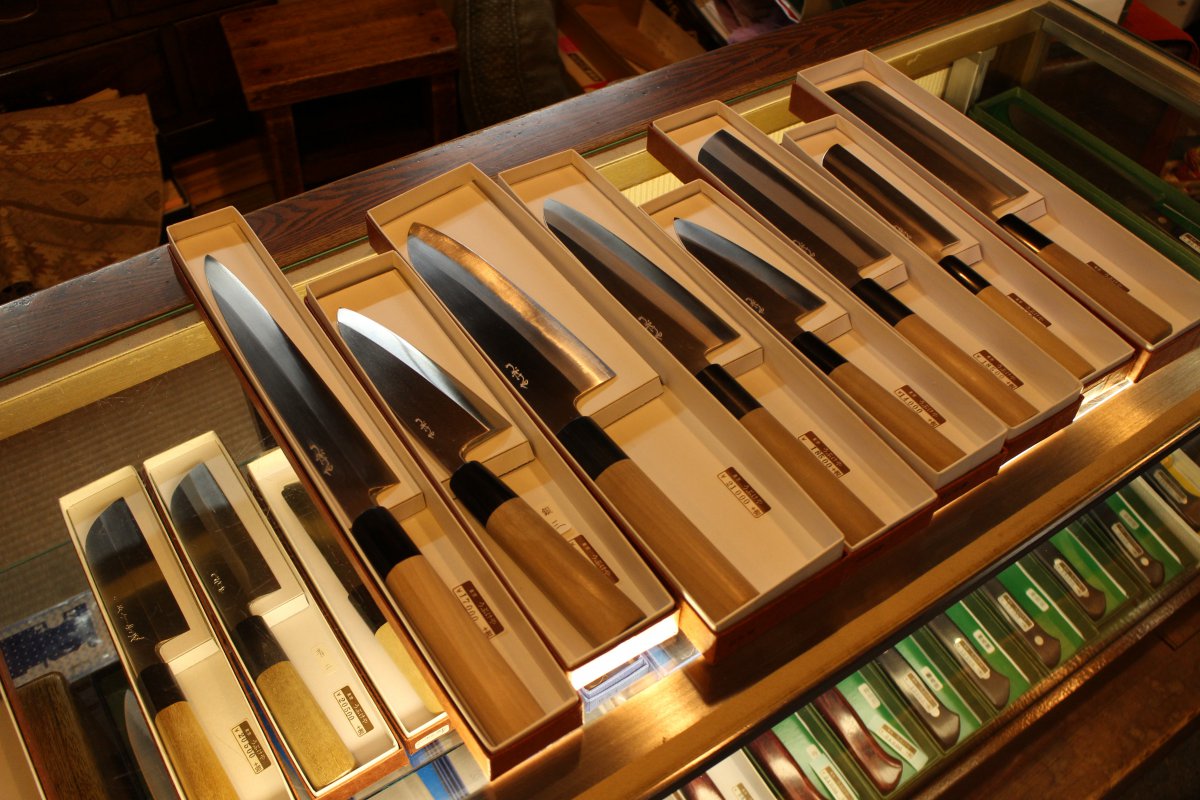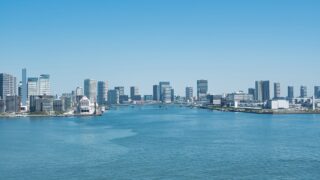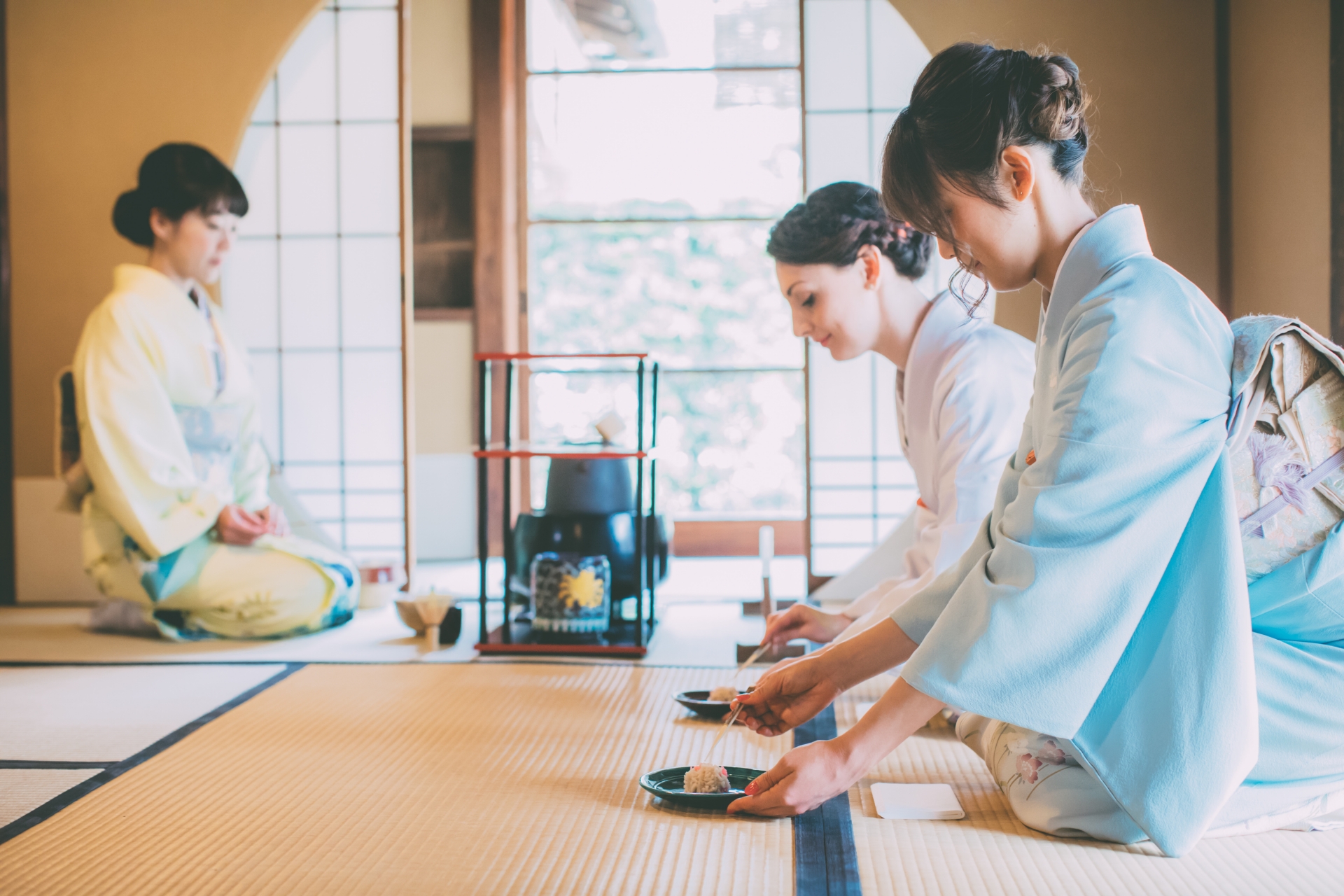On Saturday February 1st, Japan Wonder Travel organised a trial tour for tourists. The tour started with an introduction of the Japanese cuisine and products at Tsukiji Fish market, followed by a visit to the special knife craft store Ubukeya うぶけや. At the store that has been in the family for 8 generations, the current showed his great handcrafted products and explained more about the knifes. The last part of the tour involved a short tour to Nihonbashi, where also some traditional shops were visited.
Some of the participants wrote about their experiences of the tour. This blog post is written by Susanne, a Dutch girl who moved to Tokyo in the summer of 2019.
An early start at Tsukiji (but so worth it!)
On a cold but sunny Saturday morning in February, me and two of my friends joined a tour organised by Japan Wonder Travel. Even though we have all been living in Tokyo for quite some time now, we were very excited to visit this area and learn more about the history, culture and cuisine.

We met our guide of the day, Mamiko-san, in front of the Tsukiji Hongwanji Temple, the only Indian Buddhist temple made of stone as we learned. I was surprised by the building; it clearly stands out from the other buildings in the area and it was beautiful in the morning sun! After a short introduction, we made our way to the first location: Tsukiji Fish market. I had been there before, but today was the first time for my friends.
Recommended Tsukiji Hongwanji Tours:
Tsukiji fish market had been a place where both individuals as well as restaurants would get their fresh fish. Back in the days the market consisted of two parts; the inner market and the outer market. In 2018, the wholesale part of the market moved to Toyosu market. A place that is on my to do list for another (really) early morning. Present day we can only visit the outer market in Tsukiji, which reminded me of the food market that we have every Saturday in my home town in The Netherlands.
We made our way through the streets of the market and, even though it was quite early, most of the market stall were already up and running. Showing their goods and preparing for another day “at the office”. This place is definitely worth getting up early for, the earlier the better I’d say. While walking around, Mamiko-san explained us about the different fruits, veggies and other items for sale. For example, she showed us the wasabi roots and explained how to properly use this (with a shark skin grater!) and we tried some samurai-food: sugar-coated black soybeans – Amanattō (that I took home as a snack).

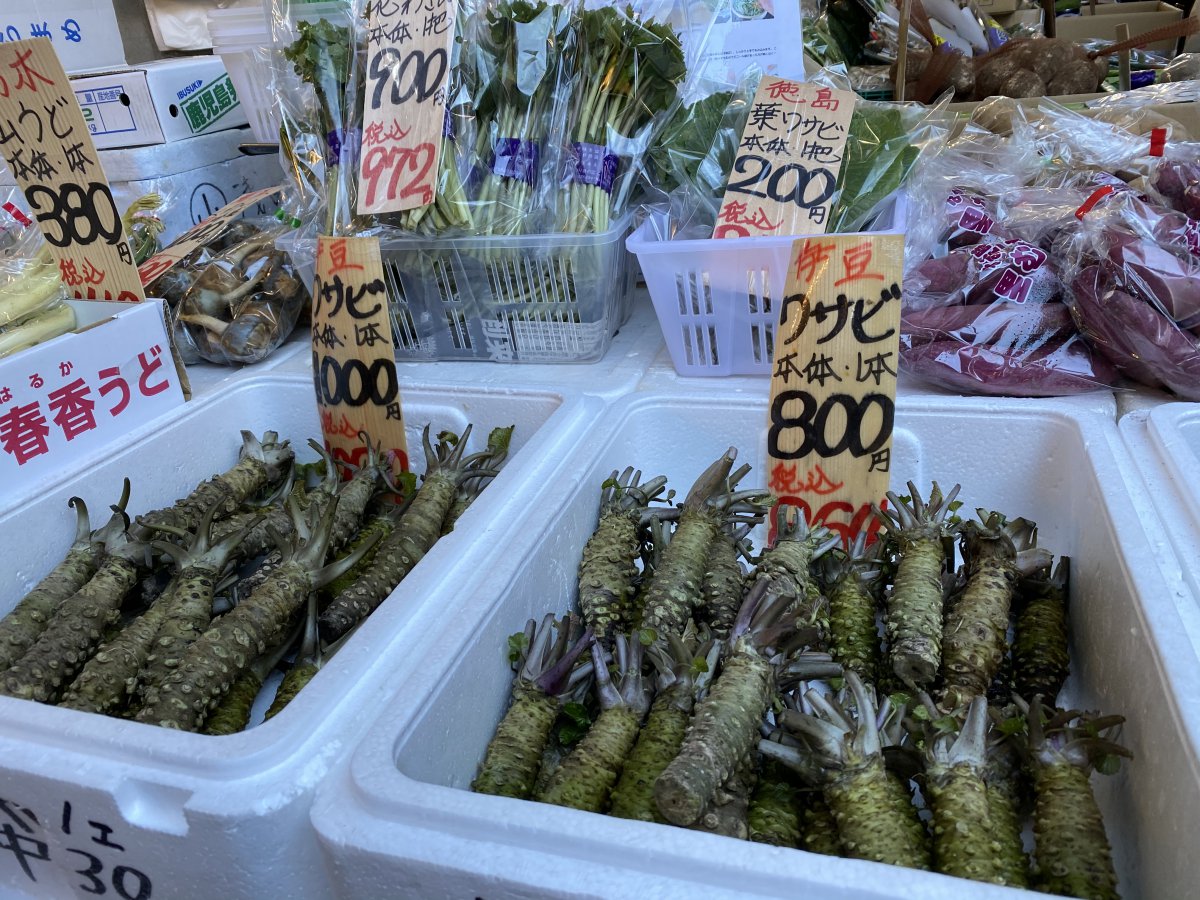
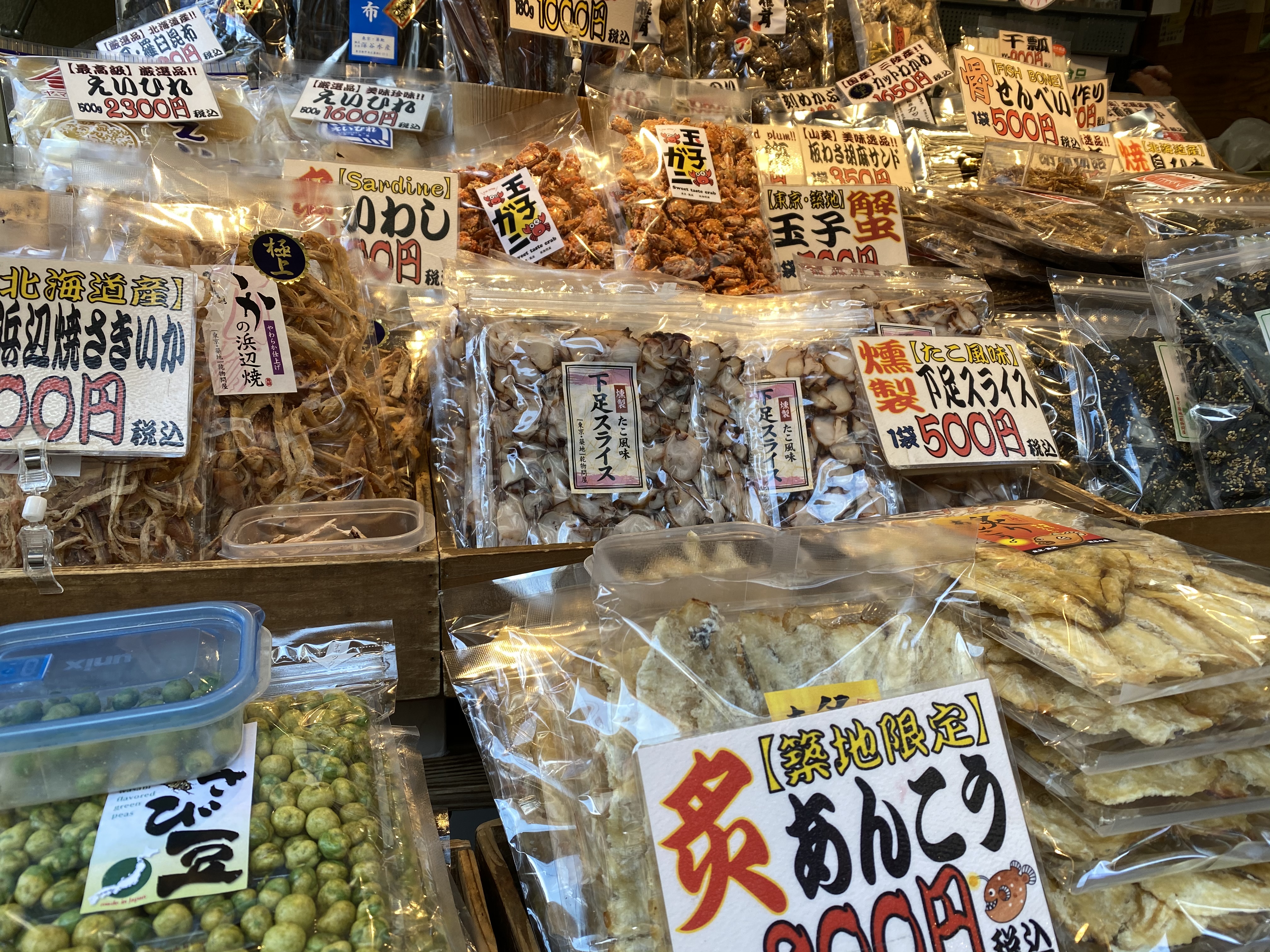
Another shop were we made a stop was Daisado, where we had our breakfast: tamagoyaki. This is the Japanese “flipped” omelette with a sweet taste. We were very lucky as we could walk into the shop and see the cooks at work in the back of the shop. It looked quite easy, but Mamiko-san assured us, that it is really hard to make a good, fluffy sweet omelette and that is takes a lot of practice!

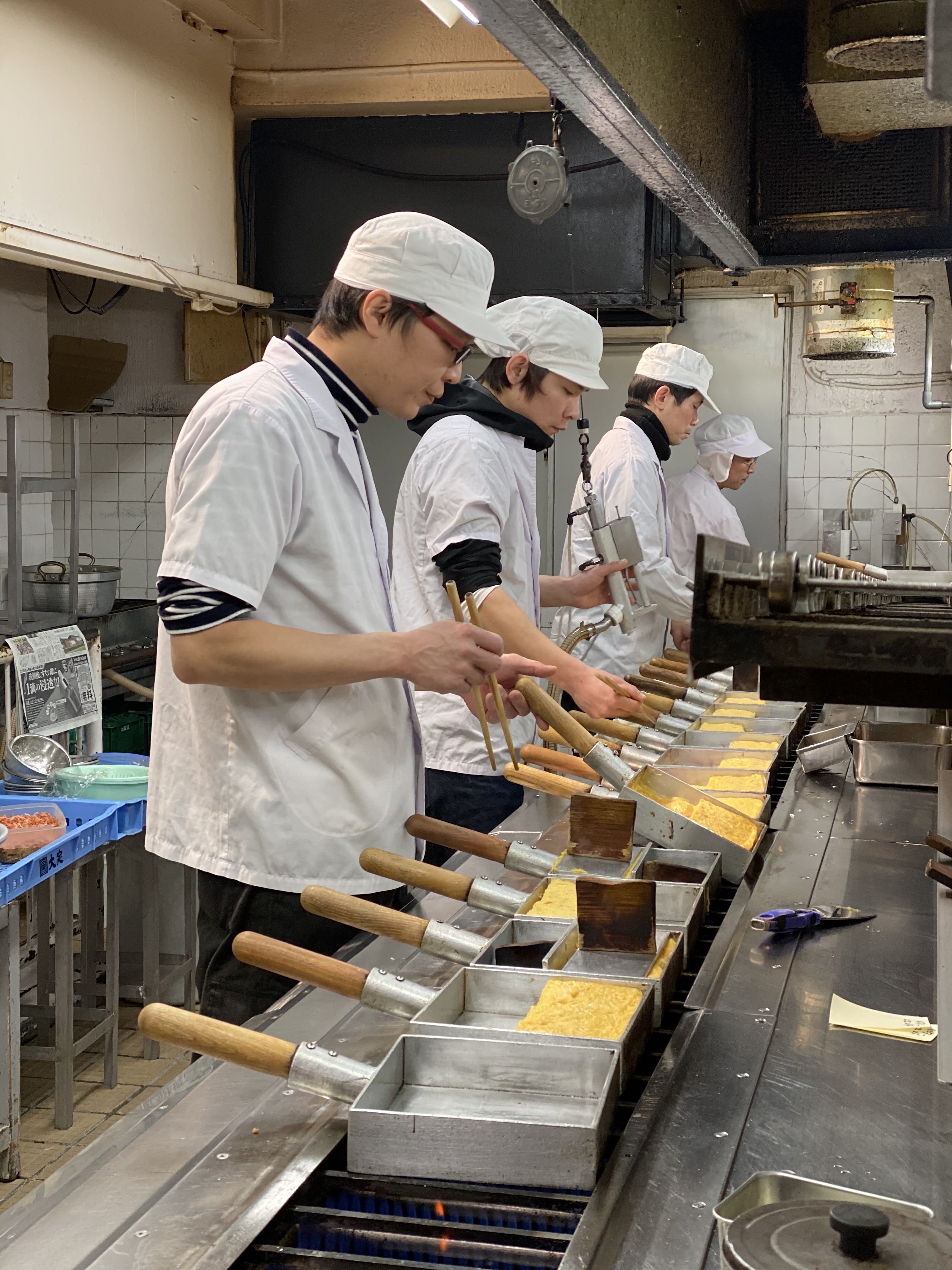

Highlight of the day: Ubukeya knife store
The next part of the programme was the the part I was most excited for; a visit to the traditional knife store Ubukeya or うぶけや. We were welcomed by the current shop owner, who is the 8th generation master of the shop. Together with his son and wife, he manages the shop located in Ningyo-cho, only a short train-ride away from Tsukiji market. In the shop over 300 different products are sold including Western & Japanese knifes, tweezers and scissors. We were welcomed with a nice cup of matcha tea while Yazaki Yutaka-san told us about his ancestors who opened the business in Osaka in 1783. However, business was better in Edo (Tokyo) and so they opened a store here. Nowadays, this is the only shop that is in business.
What makes this shop special is their way of operating: Yasaki-san will order the best raw products from other craftsman that he will than finish himself. After receiving the unfinished knifes he and his son will do the final sharpening and polishing at the back of the shop. In this way they can deliver the highest quality products, which are sold in the shop.
Fun fact: the famous sushi-chef Jiro also gets his knifes at this shop!
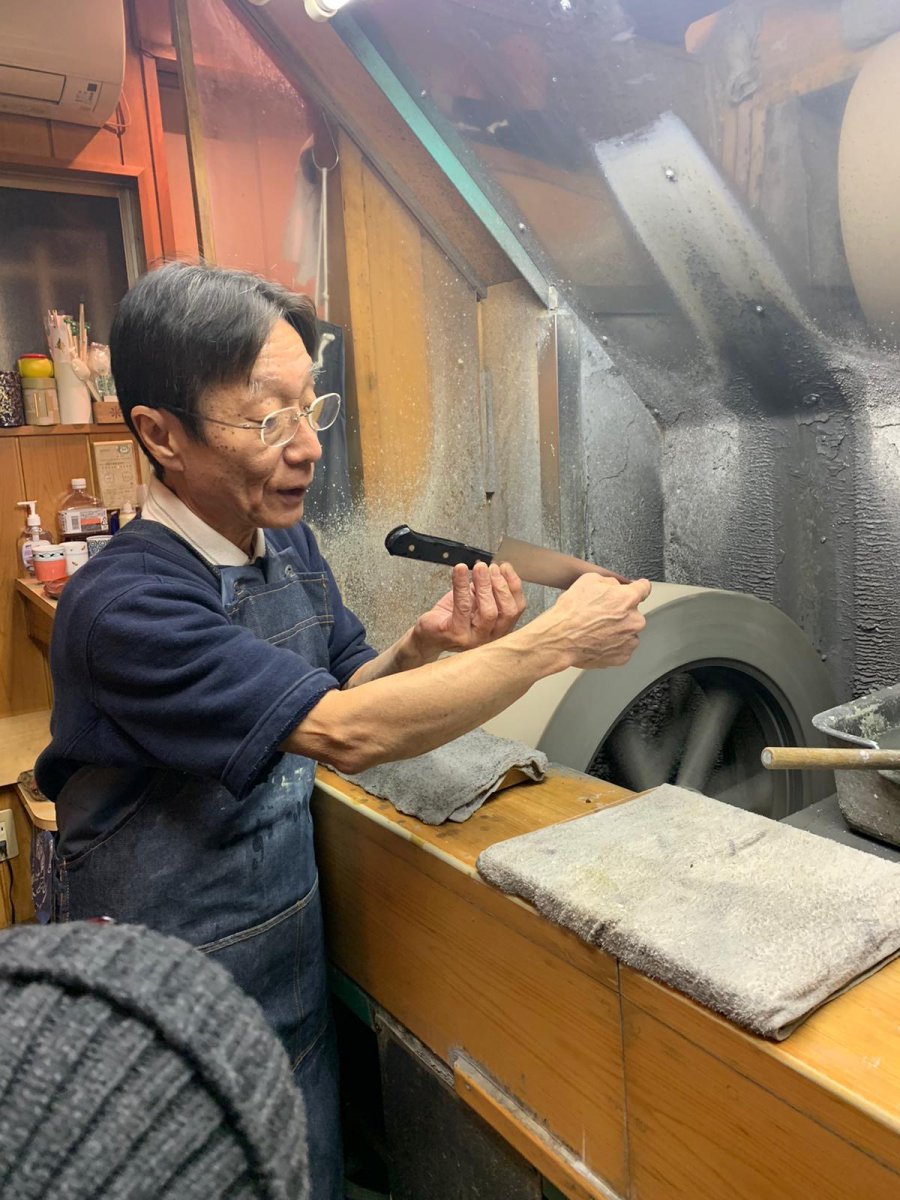
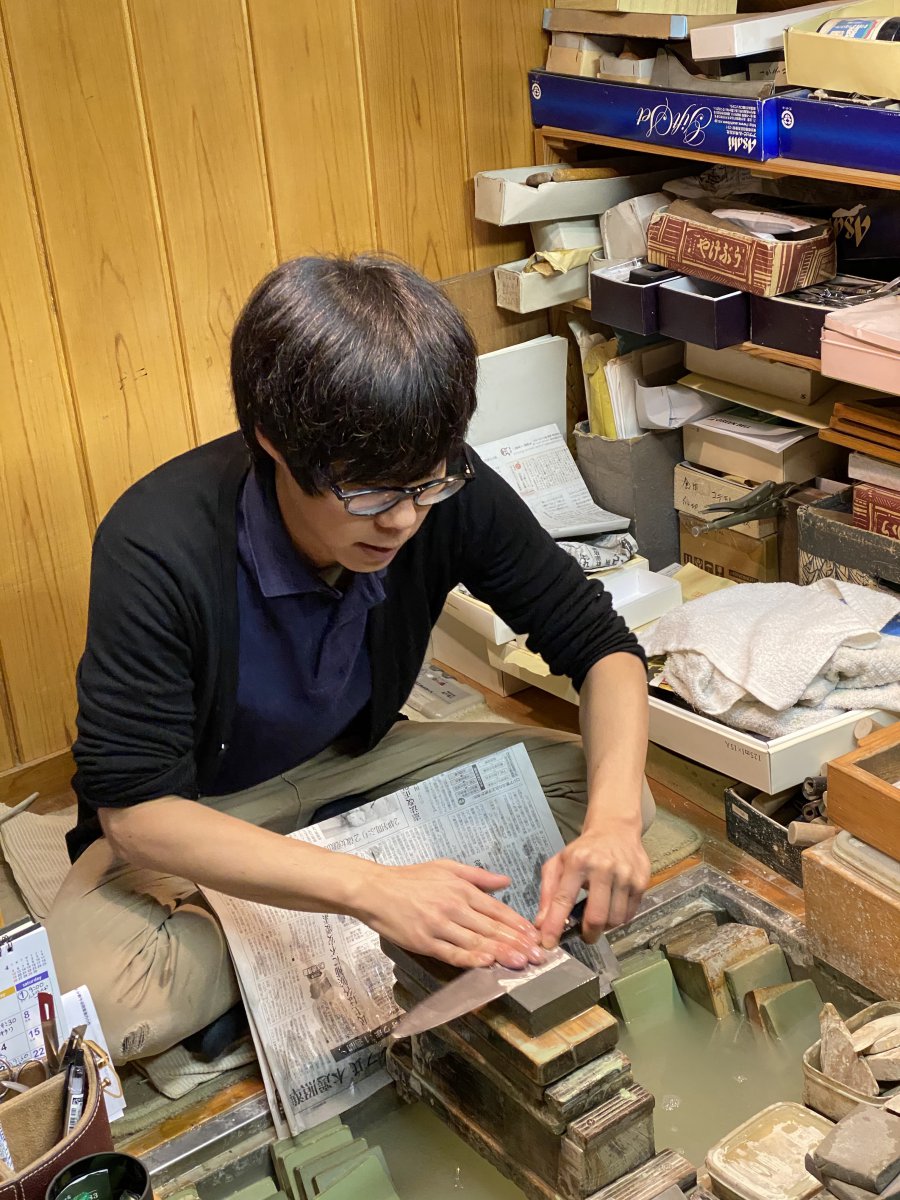
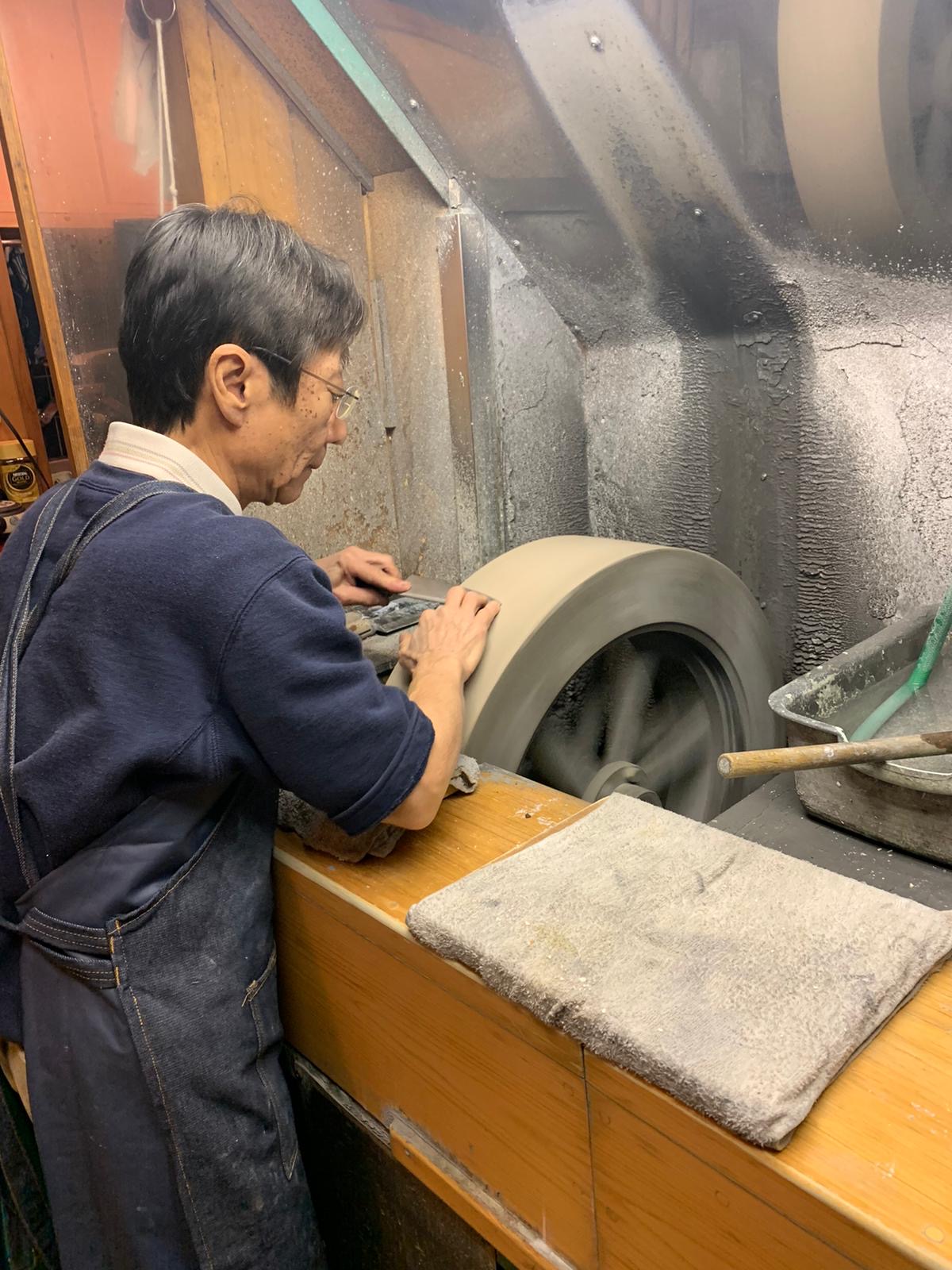
It is also possible to bring your knife to the shop for maintenance. Even when you did not purchase the knife at his shop, he can do the maintenance. During our visit, Yasaki-san sharpened a knife from a client and after he was finished, we could cut a tomato. Honestly, the best knife I was ever handed! Of course, I had to have a traditional Japanese knife of this amazing quality. (And I also couldn’t resist a set of tweezers).
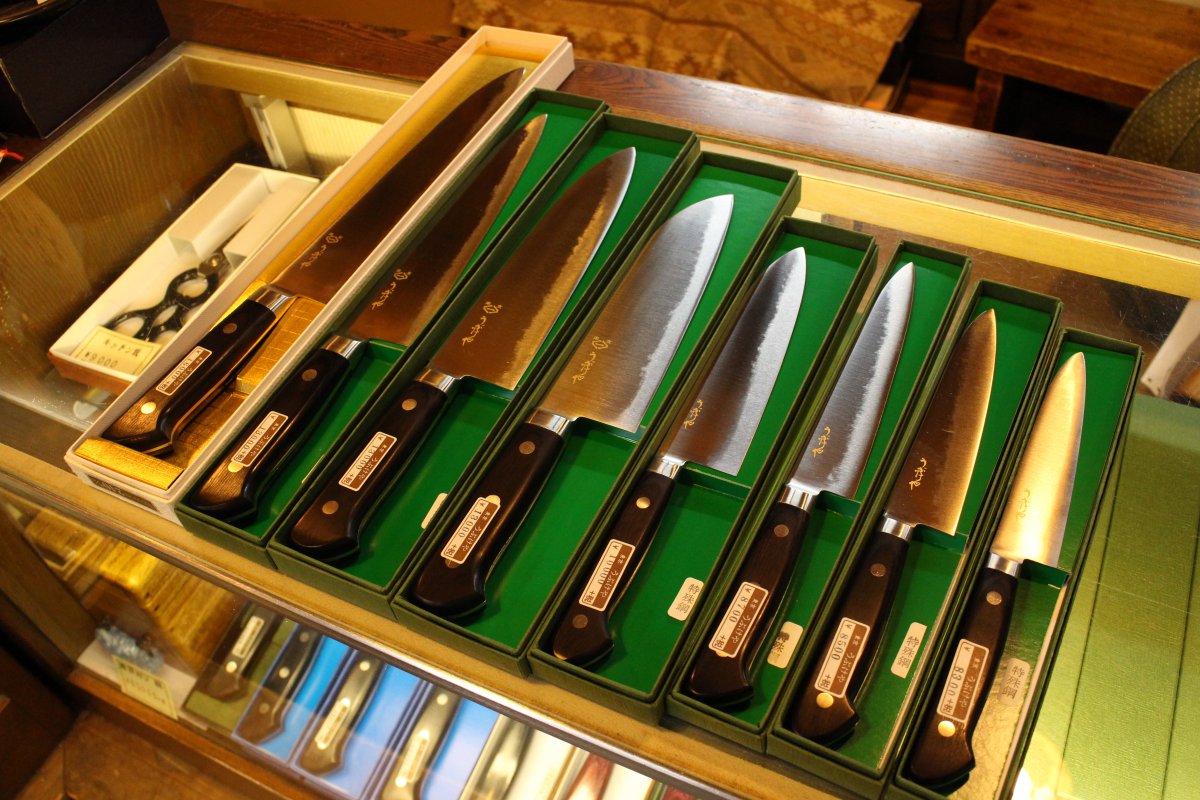
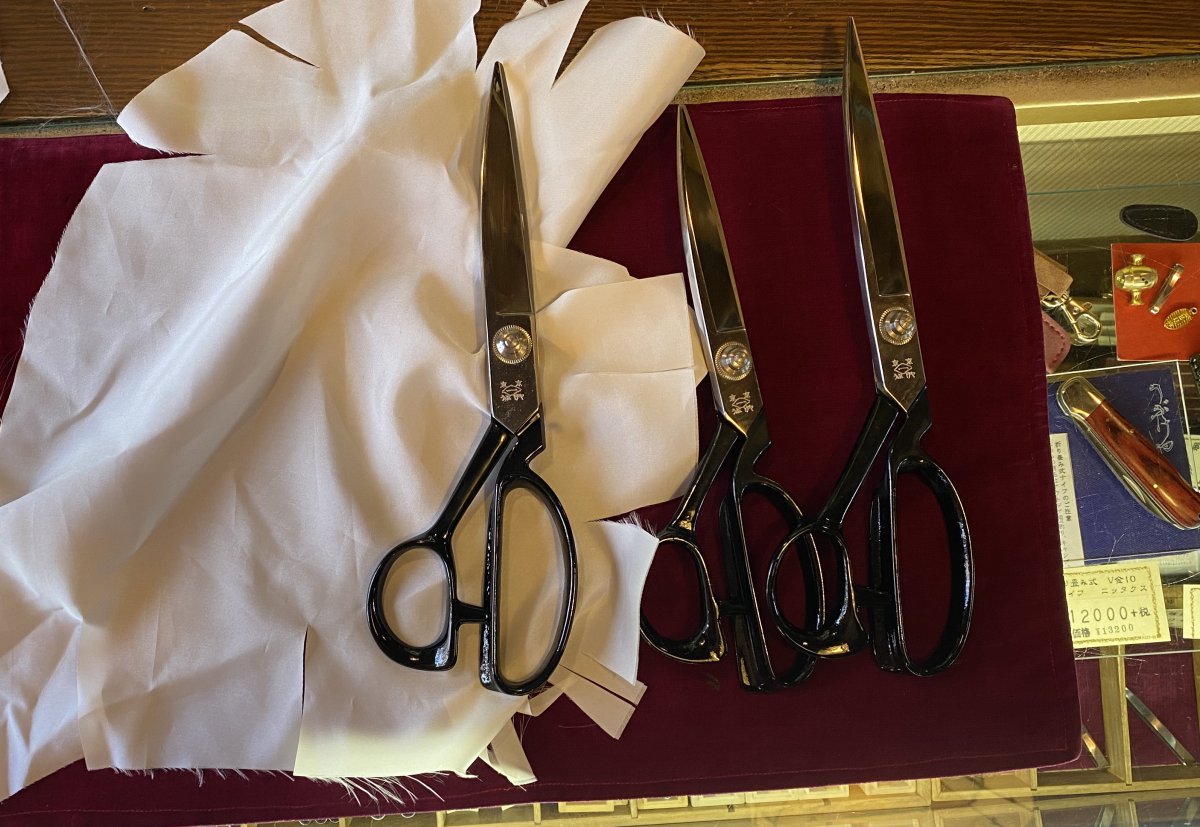
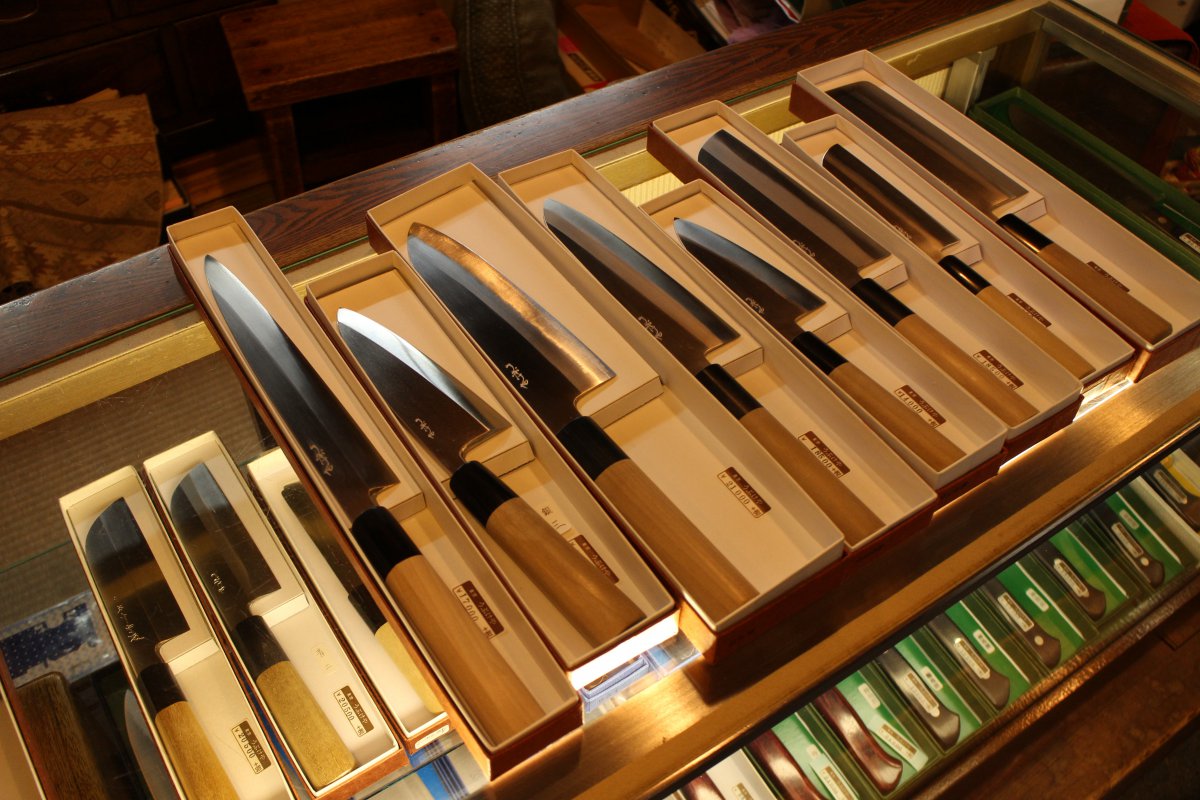
Tokyo’s zero-point
After this highlight, we continued the tour and made our way to Nihonbashi, a well preserved area with many old and new looking buildings. We made a stop at the bridge, at the zero point to be precise. Apparently, back in the days this point was marked as the starting point for the five most important roads in Japan. And it still is the zero-point present day: it is the starting point for Japan’s national highway network that is also used by GoogleMaps!


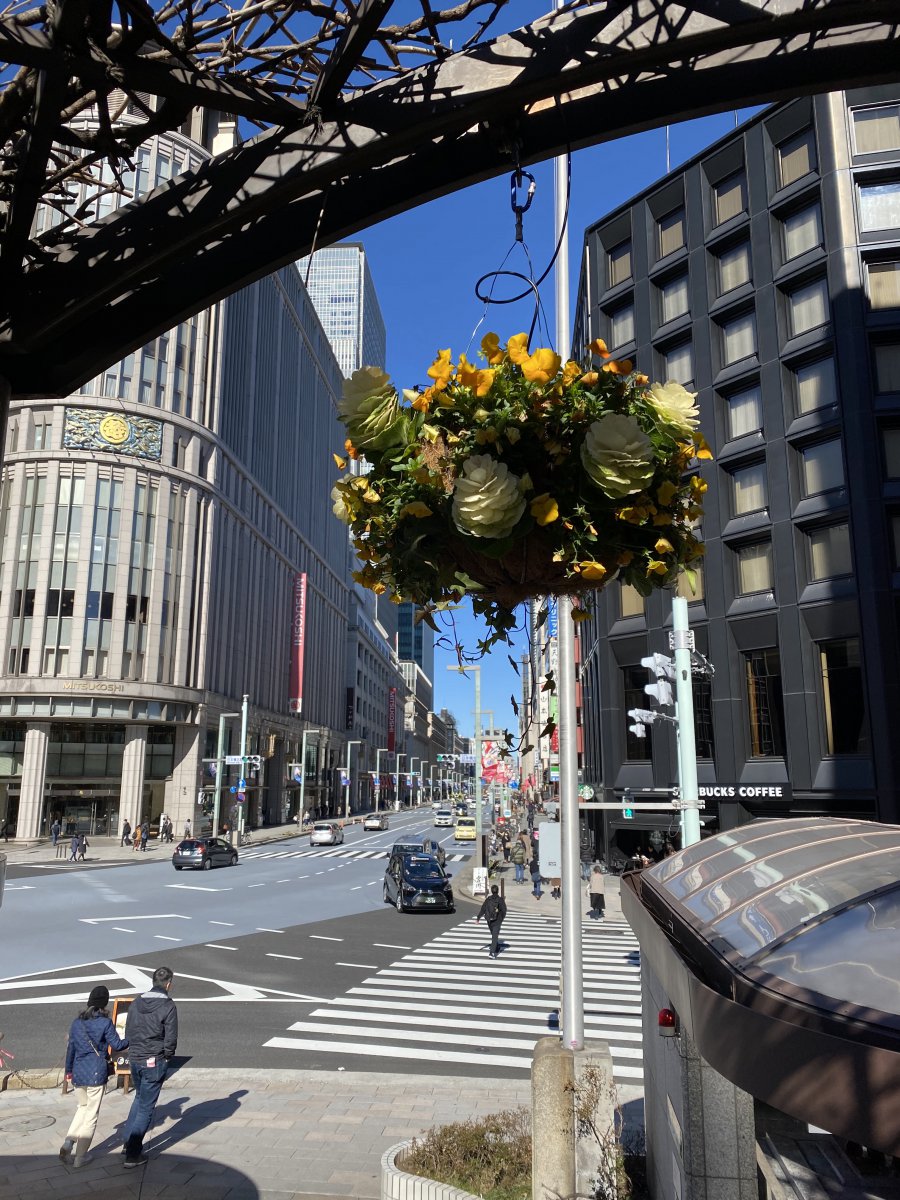
Mamiko-san made us visualize the area some decades ago, by showing us drawings and telling us stories. The area had been the first fish market of Tokyo, due to its strategic location! In Nihonbashi we visited two more family-run businesses. The first shop was Yagicho, where all ingredients needed for Japanese cooking are sold, including delicious types of dashi. The second shop Yamamoto Nori Ten has been selling nori since 1849, where we tried several different flavours. In this shop they also portrayed the history of traditional nori making. My friends were so excited about the nori that they bought some to take home (but they ate it before getting home).
Unfortunately, this was also the end of the tour. For me, it was way too soon, me and my friends would have loved to spend a few more hours listening to the interesting stories and tasting the delicious Japanese products. But also we had gotten a real appetite for sushi and Mamiko-san walked us to an amazing sushi restaurant (where I only took a picture after I had eaten half of the set). A perfect end of the day!
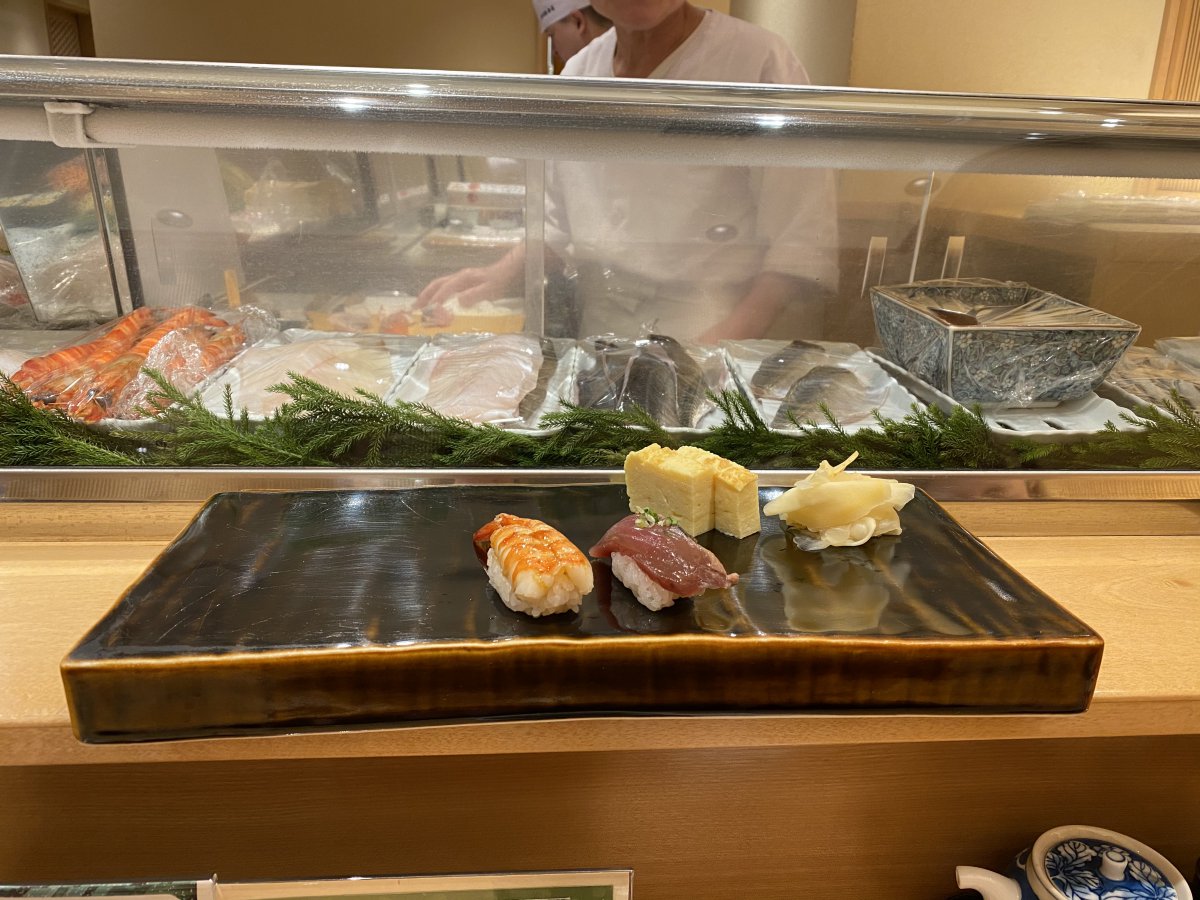
Thank you Japan Wonder Travel for this wonderful morning, it was a great and educational experience! Me and my friends are looking forward going on another tour, exploring another part of Japan!
